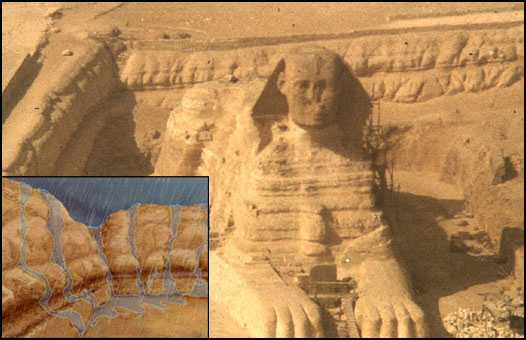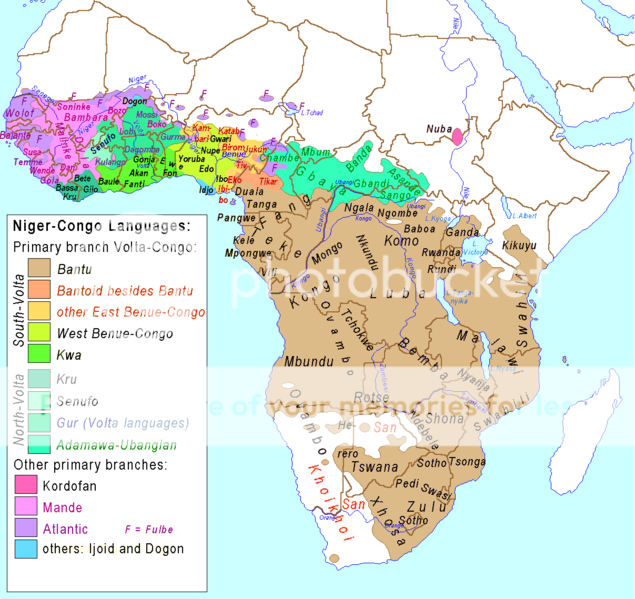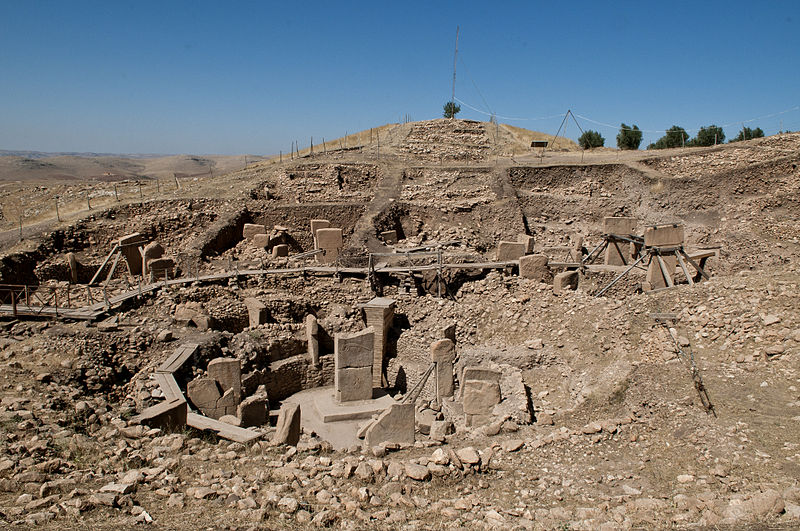There are two models of the origins of the sickle allele. The multicentric model posits five independent occurrences of the same mutation within the last few thousand years. The unicentric model posits a single occurrence and an older age. We used whole-genome-sequence data to provide insight into this issue. Using haplotypic classification and phylogenetic network analysis, we found clear and consistent evidence for a single origin of the sickle mutation. After accounting for recombination, we estimated that the sickle mutation is 259 [123,395]" role="presentation">[123,395]
generations old.
Starting from first principles of population genetics, we defined haplotypes on the basis of phased sequence data. In contrast, the classical haplotypes were based on patterns of restriction sites seen in individuals with sickle cell anemia.
3
,
4
By molecularly mapping restriction sites to the sequence data, we found that the restriction sites correlated poorly with rs334, such that none of the canonical sites were included in our sequence-based haplotypes. This discrepancy can be explained by the fact that the RFLP-defining markers circulate on both βS- and βA-carrying chromosomes, even though the restriction sites were originally used for defining types of βS-carrying chromosomes. In contrast, our haplotypes correlate strongly with rs334 and simultaneously correlate moderately with the restriction sites conditional on the presence of the βS allele, thereby capturing the classical patterns.
There are four lines of evidence regarding the age of the sickle mutation: historical data, the simulations of balancing selection, the patriline data, and the analysis of the ancestral recombination graph. Although historical records are sparse, the earliest recorded cases of fevers that could have been caused by malaria were ∼5,000 years ago in China and were possibly due to
Plasmodium vivax.
2
,
43
,
44
The earliest recorded case of illness that could have been malaria specifically caused by
Plasmodium falciparum could have been ∼4,000 years ago in Egypt and Sumer; however,
Plasmodium falciparum could have been present in Africa several thousand years earlier.
2
The first recorded cases of sickle cell anemia or, more broadly, sickle cell disease were in Egypt during the predynastic period (∼3200 BC
45
), in the Persian Gulf during the Hellenistic period (2,130 years before present
46
), and in Ghana in 1670 AD.
47
The existence of the sickle allele in predynastic Egypt constrains the lower bound of the age of the sickle mutation to be 5,200 years. On the basis of these limited data, it is historically plausible that the selective environment preceded the sickle mutation, consistent with our balancing-selection simulations, which showed that the sickle allele would have been lost almost immediately without a heterozygote advantage (under the assumption of recessive lethality).
The patriline data corroborate the age of the sickle mutation. Given a single origin, the sickle mutation most likely arose either in a population containing both E1b1a1a1f-L485 (also known as E1b1a1a1a1c-L485) and E1b1a1a1g-U175 (also known as E1b1a1a1a2a-U175) or in a population containing their common ancestor. Thus, the time of origin of the common ancestor of these two haplogroups is a plausible upper bound on the age of the sickle mutation. The common ancestor E1b1a1a1a-M4732 arose 10,500 (95% confidence interval between 9,200 and 12,000) years ago, consistent with the upper credible interval of 11,100 years ago that we estimated for the age of the sickle mutation.
The Bantu expansions started ∼5,000 years ago and took ∼2,000 years to cross from present-day Cameroon to the Great Lakes region.
48
The wide credible interval (3,400 to 11,100 years) of the age of the sickle mutation does not rule out the possibility that the mutation coincided with the onset of the Bantu expansions. However, our results support the hypothesis that the origin of the βS allele predated the onset of the Bantu expansions. First, the βS allele could have been at or near its equilibrium frequency when the Bantu expansions occurred ∼5,000 years ago, according to our estimation that the sickle mutation originated ∼7,300 years ago and that balancing selection ensued immediately and reached equilibrium in ∼2,400 years in an environment where malaria preexisted. Second, the likelihood that the βS allele is carried by migrating individuals increases with the frequency of that allele in the source population.
Our results provide some suggestions as to where the sickle mutation might have originated. Descendants of the Y chromosome haplogroup E1b1a-V38 migrated across the Sahara from east to west,
49
possibly around 19,000 years ago.
50
E1b1a1-M2 most likely did not originate in eastern or northeastern Africa, but where it originated in either western or central Africa is unclear.
49
Accordingly, the sickle mutation most likely did not occur in eastern or northeastern Africa. Our results indicate that the origin of the sickle mutation was in the middle of the Holocene Wet Phase, or Neolithic Subpluvial, which lasted from ∼7,500–7,000 BC to ∼3,500–3,000 BC. This time was the most recent of the Green Sahara periods, during which the Sahara experienced wet and rainy conditions.
51
Our results thus support the Green Sahara as a possible place of origin of the sickle mutation. An alternative hypothesis is that the sickle allele arose in west-central Africa,
13
,
52
possibly in the northwestern portion of the equatorial rainforest.
Our results also provide some suggestions as to where the three clusters might have originated. Two splits occurred early in the original βS-carrying population. The first split defined one cluster containing HAP1 and accounting for the Cameroon and CAR haplotypes. It is plausible that HAP1 was carried from an area in or around present-day Cameroon to the area that is presently the CAR, as well as to areas east and south, as part of the Bantu expansions. However, the Bantu expansions did not extend west and north. The second split subsequently separated the clusters containing HAP16 and HAP20, the modal haplotypes accounting for the Benin and Senegal haplotypes, respectively. HAP16 and HAP20 shared one derived mutation, consistent with an early split. Furthermore, given the subsequent accumulation of derived mutations not shared between HAP16 and HAP20, effectively no gene flow occurred between these two descendant populations, consistent with geographic separation. We therefore hypothesize that the common ancestor of these two clusters existed north of Cameroon among non-Bantu-speaking peoples in or around present-day Nigeria. From this common ancestral population, a group of migrants separated and traveled west and north to the area around present-day Senegal and the Gambia. These migrants could have taken a coastal or an inland route. The finding that the Senegal haplotype was the predominant haplotype in the sample of Mende from Sierra Leone is consistent with a coastal route. We do not have data to investigate an inland route, but we note that the frequency of the sickle allele is higher along the coast than inland.
53
Classical haplotypes in eastern Arabia tend to have the Arabian/Indian designation, whereas those in western Arabia tend to have the Benin designation.
18
,
21
The Arabian/Indian haplotype has been hypothesized to have originated in either east Saudi Arabia or India.
5
Although our samples include only one predicted instance of the Arabian/Indian haplotype, the occurrence of this haplotype in the Luhya in Kenya and its clustering with the predominant haplotype found in Kenya and Uganda are consistent with the hypothesis that the Arabian/Indian haplotype originated in Africa and had an overseas migration route from eastern Africa to eastern Arabia and India.
13
,
19
In contrast, the absence of the Benin haplotype in the Luhya in Kenya and the Baganda in Uganda provides evidence against an overseas migration route from eastern Africa to western Arabia. Instead, the presence of the Benin haplotype in western Arabia is consistent with an African origin and an overland migration route through northeast Africa.
33
Together, our results suggest the following evolutionary history of the sickle mutation. The presence of African ancestry, an African patriline, and/or an African matriline in all sickle carriers, combined with the absence of Arabian or Indian ancestries in the five continental African samples in the 1000 Genomes Project,
33
supports an African origin of the sickle mutation.
The sickle mutation occurred once approximately 7,300 years ago either in the Sahara or in west-central Africa. In an environment where malaria preexisted, balancing selection took approximately 2,400 years to drive the βS allele to an equilibrium frequency of 12.0%. A population split occurred, possibly in the area around present-day Cameroon. Starting approximately 5,000 years ago, the Bantu expansions resulted in the spread of HAP1 to the CAR, the Great Lakes region, and South Africa. After acquiring one derived allele, the population split into one carrying a haplotype that evolved into HAP16 and another carrying a haplotype that evolved into HAP20. In both clusters, hitchhiking of the derived alleles with the βS allele resulted in similar derived allele frequencies.
Our study includes sequence data from western, west-central, and eastern Africa but lacks comparable data from northern, central, and southern Africa. A haplotype has been identified among Sudanese individuals that was classified as atypical but might be a fifth African haplotype.
54
It is possible that sampling additional populations could provide more evidence regarding when, where, and in whom the sickle mutation arose.
Our findings support classification of sickle haplotypes based on three clusters. Notably, we found that the Senegal haplotype is substructured into two clusters, one containing only Senegal haplotypes and one containing Benin and Senegal haplotypes. This substructuring of haplotypes might have confounded previous assessments of clinical phenotype or disease severity. At the same time, the identification of markers linked to the sickle allele provides an opportunity to investigate possible cis-effects, such as differential expression of
HBD,
HBE1, and
HBG2, on disease severity.


























